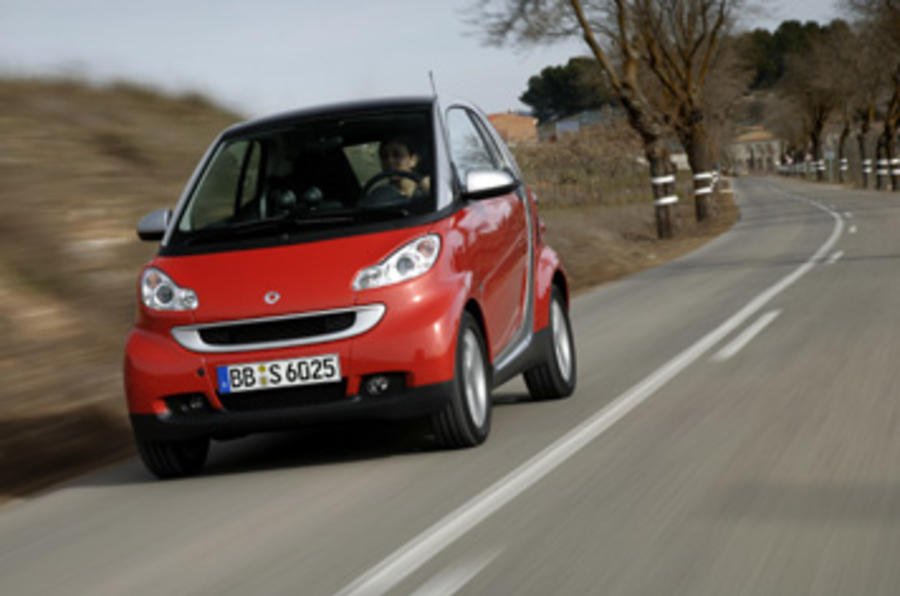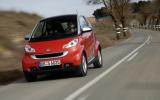What's new?
It has been clear for ages that DaimlerChrysler wanted to save its troubled Smart city car brand. Bosses reckoned total sales of 770,000 cars in eight years showed the original concept was right, and with the world growing daily more conscious of car congestion and pollution, the future for a right-sized Smart operation might even be bright.
That’s why bosses summarily dumped the slow-selling Roadster and Forfour, slashed costs at the Hambach plant (by halving the workforce), devised a plan to sell the car in the US and set a crack team to work correcting the dynamic shortcomings of Smart's core model, the Fortwo. This is the fruit of that team's labour – the second-generation Smart Fortwo. So is it a brand-saver?
What's it like?
The list of the original Smart car's faults is short but fundamental. It needed big improvements to steering, ride, handling and motorway stability. It needed more accessible performance and something better than a painfully-slow clutchless gearchange. It also needed better quality materials, especially inside. What it didn’t need was the basic concept to be messed with: owners loved that.
For 2007, engineers have attacked every fault on that list. Using a similar basic structure (lengthened 20cm, mostly in the front overhang), they have made the coupe comply with forthcoming US and European crash regulations. They have radically improved the suspension, increasing the tyre sizes, tracks (by 30mm) and wheelbase (by 60mm), and they have replaced the small, expensive-to-produce 700cc three-cylinder petrol turbo engine with a Mitsubishi-sourced 1.0-litre unit available in three power levels (normally-aspirated 61bhp and 71bhp, plus turbocharged 84bhp tune). Smart has also upgraded the ultra-frugal 45bhp 800cc turbodiesel motor.
There’s usefully more cabin and boot space in this evolved Smart (the boot’s now bigger than that of a Mini), plus discreet styling changes give the car a squarer-jawed, more masculine look. There are still three models — Pure (base), Pulse (sporty, with bigger tyres) and Passion (luxury). But the biggest deal is a new five-speed ZF gearbox, still clutchless with a button-select automatic mode. Dumping a six-speed gearbox for a five-speed hardly looks like progress, but the new one halves gearchange times, and works with the car’s improved torque to give much better performance.
And so it proves on the road. Use auto mode to drift about town, and you’ll hardly ever notice the “nodding-dog” problems of old. Change with the lever when driving harder, and you’ll actually enjoy the performance. The ‘box even blips nicely on downchanges.
The top two petrol engines are the most relevant to UK buyers (the low-power petrol’s too feeble and the diesel won’t be sold here) and both feel smooth and torquey. The turbo’s best, both because it’s quieter and because it gives the 800kg Smart genuine open-roads performance. The car is governed to a maximum speed of 90mph, but it gets there easily. Its bigger footprint and better suspension geometry improve stability — notably in crosswinds and the “wash” of trucks on motorways — and there’s a new-found steering accuracy and authority. It still understeers, but front grip is now strong and predictable. The ride is surprisingly pitch-free, and bump-damping is much improved.
Should I buy one?
We'd better tell you how much it costs first. Smart is predicting an entry price of nearly £7000 for this new car; that's a clear £1000 above the current city-car threshold. Smart marketing men claim theirs is a “special” car, not just an economy model, and will become more special very soon if plans to exempt cars emitting less than 120g/km of CO2 from the London congestion charge come to pass next year. However, £1000 is certainly enough to make you question how much you value the Smart's quirkiness, and how much you really need to be able to park perpendicularly to the kerb.

















Add your comment